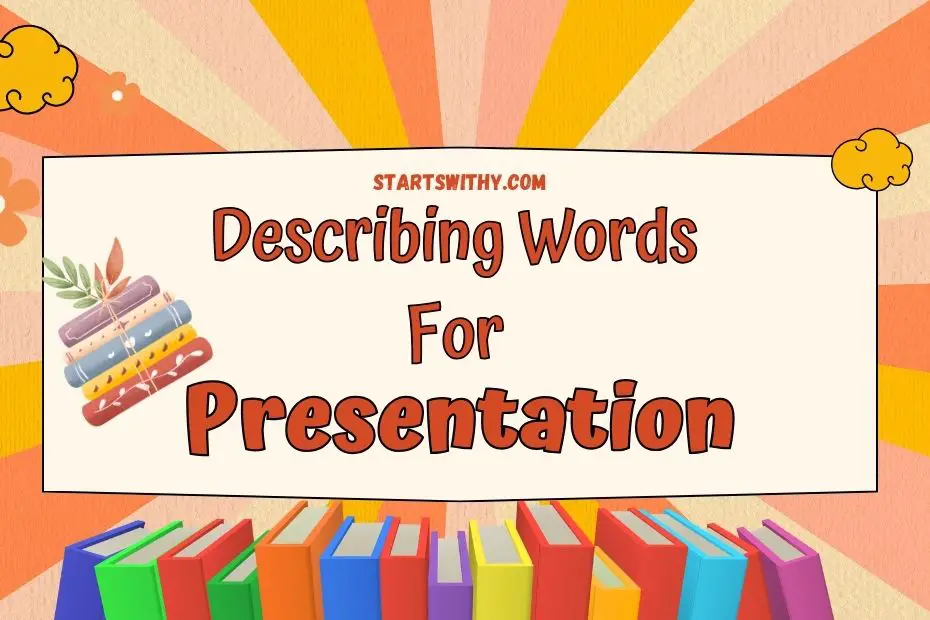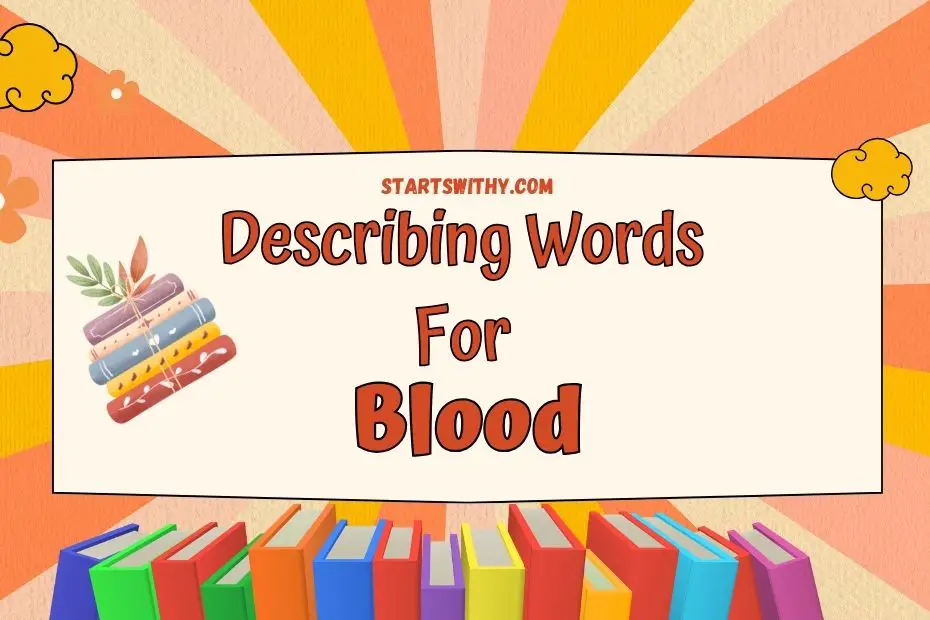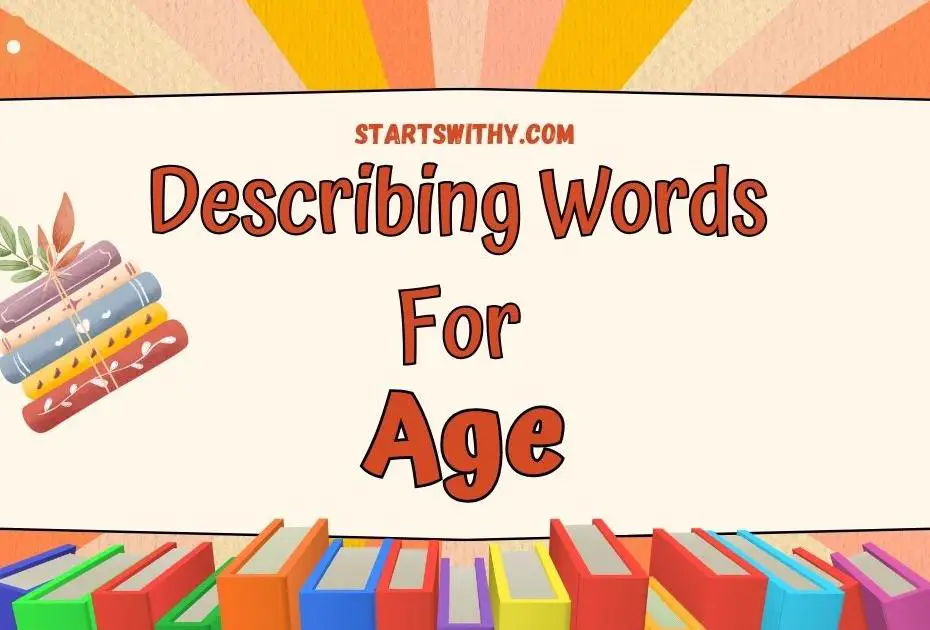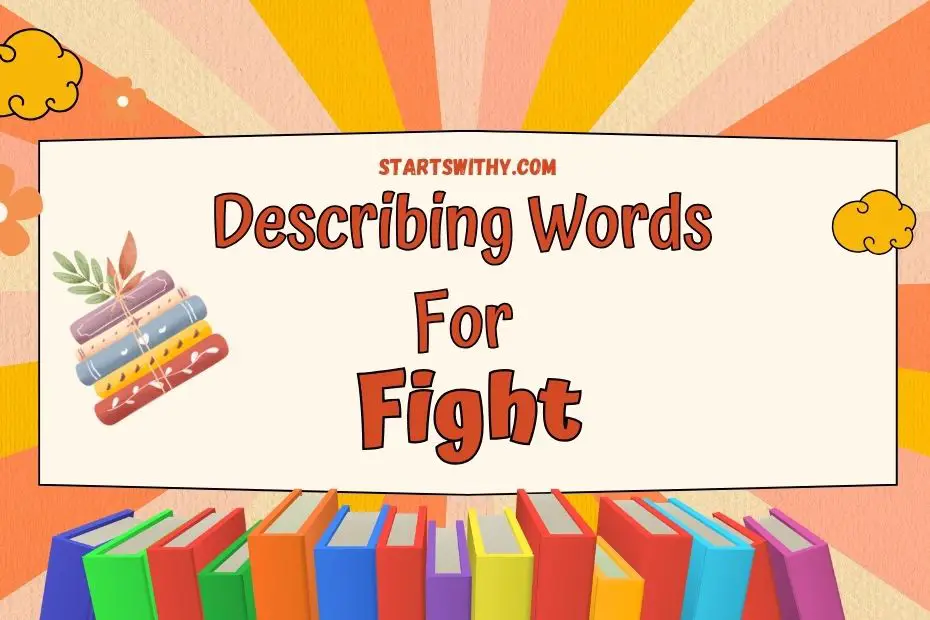When it comes to delivering a presentation, the right choice of words can make all the difference. Adjectives have the power to captivate your audience, paint vivid pictures, and bring your ideas to life. In this article, I’ll be sharing a comprehensive list of adjectives that you can use to enhance your presentations and leave a lasting impression on your listeners.
From powerful and persuasive to descriptive and engaging, these adjectives will help you create a dynamic and impactful presentation. Whether you’re presenting in a boardroom, classroom, or conference hall, incorporating these adjectives into your speech will elevate your delivery and make your message more memorable.
How to Describe presentation? – Different Scenarios
When it comes to describing a presentation, the choice of adjectives plays a crucial role in capturing the attention of the audience and leaving a lasting impression. Depending on the specific scenario, different adjectives can be used to enhance the description and make it more vivid and engaging. Let’s explore some scenarios and the appropriate adjectives to use:
1. Informative Presentations
Informative presentations aim to educate and provide valuable information to the audience. When describing such presentations, it is important to use adjectives that convey the depth and significance of the content. Here are some examples:
- Insightful: The presentation provides valuable insights and knowledge.
- Thorough: The speaker covers all aspects of the topic in a comprehensive manner.
- Instructive: The audience gains practical guidance and instructions.
- Educational: The presentation helps to expand the audience’s knowledge and understanding on the topic.
2. Inspirational Presentations
Inspirational presentations are designed to motivate and uplift the audience. When describing these presentations, it is essential to use adjectives that evoke emotions and convey a sense of inspiration. Consider using these adjectives:
- Motivating: The presentation encourages and inspires the listeners to take action.
- Empowering: The audience feels empowered and capable after the presentation.
- Uplifting: The speaker’s words leave the audience feeling positive and uplifted.
- Energizing: The presentation sparks enthusiasm and energy in the listeners.
3. Persuasive Presentations
Persuasive presentations aim to convince the audience and influence their opinions or actions. When describing persuasive presentations, it is important to choose adjectives that highlight the power and effectiveness of the speaker’s arguments. Here are some examples:
- Compelling: The presentation is persuasive and captures the audience’s attention.
- Convincing: The speaker presents strong arguments that persuade the listeners.
- Influential: The presentation has the power to sway opinions and inspire action.
- Persuasive: The audience is convinced by the speaker’s compelling arguments.
Describing Words for presentation in English
When it comes to describing a presentation, choosing the right adjectives is essential to evoke the desired impact and engage your audience. In this section, I will provide you with a range of describing words that you can use to enhance your presentation and make it more effective. Let’s dive in!
- Informative Presentations
When you want to convey information and facts to your audience, it is important to use adjectives that highlight the clarity and accuracy of your content. Here are some examples:
- Educational: These presentations aim to educate the audience and provide valuable knowledge.
- Insightful: Describing your presentation as insightful implies that it offers new perspectives and deep understanding.
- Informative: This adjective emphasizes the delivery of useful and relevant information.
- Data-driven: If your presentation is backed up by research and statistics, using this term will showcase the credibility of your data.
- Inspirational Presentations
If your goal is to inspire and motivate your audience, using powerful and uplifting adjectives is key. Consider incorporating the following words:
- Motivational: This adjective implies that your presentation aims to inspire people to take action or make positive changes.
- Empowering: Describing your presentation as empowering means that it helps individuals feel confident and capable.
- Life-changing: If your content has the potential to make a significant impact on people’s lives, this adjective will convey its profound significance.
- Transformative: This word suggests that your presentation can bring about powerful transformations and personal growth.
- Persuasive Presentations
When you want to convince your audience and persuade them to take a specific action or adopt a particular viewpoint, using persuasive adjectives is crucial. Here are a few examples:
- Compelling: This adjective emphasizes that your presentation is highly convincing and engaging.
- Convincing: Describing your content as convincing implies that it provides strong arguments and evidence.
- Persuasive: This term directly indicates the goal of your presentation – to persuade the audience.
- Influential: If your presentation has the power to sway opinions and change minds, using this adjective will enhance its impact.
Remember, the choice of describing words depends on the nature and goal of your presentation. By carefully selecting the right adjectives, you can create an engaging and impactful experience for your audience.
Adjectives for presentation
When it comes to delivering a presentation, the choice of words can make all the difference in capturing the attention of your audience. To create a truly impactful and engaging presentation, it’s important to choose adjectives that effectively convey the depth, significance, and emotion of your content. In this section, I’ll explore both positive and negative adjectives that you can use to enhance your presentation.
Positive Adjectives for Presentation
Using positive adjectives in your presentation can help create a sense of excitement, inspiration, and motivation for your audience. Here are 12 examples of positive adjectives that you can incorporate into your presentation:
| Adjective | Example Sentence |
|---|---|
| Informative | This presentation provides thorough explanations of the topic. |
| Inspiring | The speaker’s passionate delivery left the audience feeling motivated. |
| Engaging | The presentation was captivating, keeping the audience intrigued throughout. |
| Persuasive | The speaker’s convincing arguments swayed the audience’s opinion. |
| Dynamic | The presenter’s energetic and animated delivery captivated the audience. |
| Impactful | The visuals and storytelling used in the presentation were powerful. |
| Memorable | The presenter’s memorable anecdotes left a lasting impression on the audience. |
| Clear | The speaker’s crystal-clear explanations made complex concepts easy to understand. |
| Insightful | The presentation provided insightful perspectives on the topic. |
| Interactive | The audience was actively engaged in the interactive activities during the presentation. |
| Compelling | The presenter used compelling evidence and examples to support their argument. |
| Well-structured | The presentation was well-organized and followed a logical flow. |
Negative Adjectives for Presentation
While positive adjectives can enhance your presentation, negative adjectives can also serve a purpose in highlighting challenges or drawbacks. Here are 5 examples of negative adjectives that you might consider using in your presentation:
| Adjective | Example Sentence |
|---|---|
| Confusing | The presentation was confusing and left the audience with more questions than answers. |
| Monotonous | The presenter’s monotonous tone made it difficult to stay engaged. |
| Disorganized | The lack of structure made the presentation disorganized and hard to follow. |
| Repetitive | The speaker’s constant repetition of points became tedious for the audience. |
| Underwhelming | The overall content and delivery of the presentation were underwhelming, disappointing the audience. |
Remember, the key to using adjectives effectively in your presentation is to ensure they align with the nature and goal of your presentation. By carefully selecting adjectives that convey the right tone and emotions, you can create an engaging and impactful experience for your audience.
Synonyms and Antonyms with Example Sentences
Synonyms for presentation
When it comes to describing a presentation, there are several synonyms that you can use to convey different aspects of it. Here are some examples of positive synonyms that can enhance your description:
- Informative: The presentation was packed with valuable information on the topic.
- Inspiring: The speaker’s passionate delivery inspired the audience to take action.
- Engaging: The interactive elements made the presentation highly engaging for everyone.
- Persuasive: The presenter’s well-researched arguments were highly persuasive.
- Dynamic: The speaker’s energetic delivery kept the audience captivated throughout.
- Impactful: The presentation left a lasting impact on the minds of the attendees.
- Memorable: The unique storytelling approach made the presentation truly memorable.
- Clear: The presenter’s concise explanations made the complex topic easy to understand.
- Insightful: The presentation provided valuable insights into the industry trends.
- Interactive: The audience actively participated in the interactive segments of the presentation.
- Compelling: The presenter’s compelling delivery style held the attention of the audience.
- Well-structured: The logical flow of the presentation made it easy to follow.
Antonyms for presentation
On the other hand, there are also negative adjectives that can be used to highlight challenges or drawbacks of a presentation. Here are some examples to consider:
- Confusing: The disorganized structure of the presentation left the audience confused.
- Monotonous: The lack of variation in the speaker’s tone made the presentation dull.
- Disorganized: The scattered content made it difficult to understand the main points.
- Repetitive: The presenter kept repeating the same information, which became tedious.
- Underwhelming: The lack of enthusiasm made the presentation fall short of expectations.
By carefully selecting the right adjectives that align with the nature and goal of the presentation, you can create an engaging and impactful experience for your audience. Remember, the choice of words matters when it comes to painting a vivid picture of your presentation.
Conclusion
Choosing the right adjectives to describe a presentation is crucial for creating an impactful and engaging experience for the audience. By using positive adjectives like informative, inspiring, engaging, and dynamic, presenters can captivate their listeners and leave a lasting impression. These adjectives help convey the value and significance of the presentation, making it memorable and insightful.
On the other hand, negative adjectives like confusing, monotonous, and disorganized can be used to highlight challenges or drawbacks in a presentation. These adjectives serve as a reminder for presenters to avoid common pitfalls and strive for clarity and organization.
It is important to select adjectives that align with the nature and goal of the presentation. By doing so, presenters can effectively communicate their message and connect with their audience on a deeper level. Adjectives like persuasive, impactful, and compelling can help create a sense of urgency and motivate action.
The choice of adjectives can greatly influence the success of a presentation. By carefully selecting descriptive words that accurately reflect the content and delivery, presenters can enhance their communication skills and create a memorable experience for their audience.



